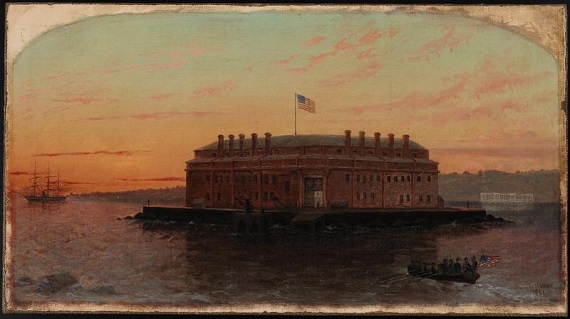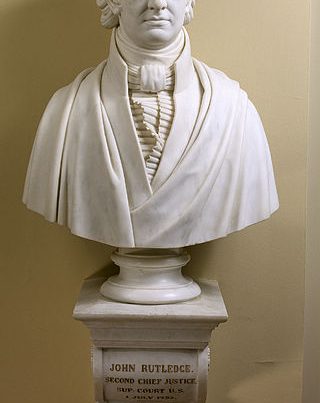It is time to consider the crimes committed against Southern prisoners of war by their federal captors. In 1903, Adj. Gen. F. C. Ainsworth estimated that more than 30,000 Union and 26,000 Confederates died in captivity (that is 12% died in the North and 15.5% in the South). However, the numbers and the death rate of Confederate prisoners were vastly understated first, because many captives died without their deaths being recorded and secondly, the winners did not wish to admit to the hideous rate with which those at their mercy perished. Indeed, Rhodes admitted that there should have been a much greater disparity—even using his own numbers—in favor of survival for those imprisoned in the North, given the superior conditions existing such as physicians, hospitals, medicines, food, supplies and housing. But the simple fact is this: from the beginning of the War, the federal government intended to “make treason odious” by treating captured Confederate soldiers as traitors and rebels rather than legitimate prisoners of war.
Even the usually chivalrous George McClellan forced Confederate prisoners to clear mine fields after some of his men were killed despite the fact that such usage of prisoners was expressly forbidden by the Lieber Code in paragraph 75. Sherman added his own perverse twist to this practice when he used civilians as well as prisoners for this purpose. Prisoners were routinely tortured mutilated and killed in, among other places, Jackson, Tennessee and several members of the town’s clergy were arrested and threatened with like treatment until General Nathan Bedford Forrest promised to execute five federal officers in retaliation if the pastors were killed. The federals, knowing that Forrest would be as good as his word, released the ministers without harm. Isn’t it odd how Forrest has come down to us today as a villain while criminals like Sherman and Sheridan are revered as great warriors?
Confederate officers were used as human shields in the infamous instance of the Immortal 600 while non-combatants were used as shields on federal trains in war zones as noted in John Mosby’s account of this matter in the newspapers in 1895. The mortality rate from torture, starvation, exposure and disease in Federal prison camps was astonishing to all who have studied the matter. Elmira prison in New York—known as HELLmira for obvious reasons—had a 24% death rate, higher than any other prison on either side including the infamous Andersonville.
And as for Andersonville, yes, there were war crimes, but they were not committed by either the Confederate government or camp commander, Captain Henry Wirz. Those crimes were committed by Ulysses S. Grant and Abraham Lincoln. On August 19th, 1864, Grant wrote to Union Secretary of State Seward:
“We ought not to make a single exchange nor release a prisoner on any pretext whatever until the war closes.”
Now the exchange problem between the two sides—much hampered by former slaves found fighting for the Union—was by no means all the fault of the Union. But with regards to Andersonville, there was a much greater crime than the problem of exchange. The South, starving and destitute, could not feed or care for its own people much less its prisoners. Exchange allowed the Confederacy to get rid of those consuming its limited resources as well as regain soldiers. Grant understood the situation, and chose to leave Union soldiers in durance vile to prevent any soldiers going to Lee. Strategically, it was understandable, but Grant also knew he was condemning thousands, perhaps tens of thousands of federal soldiers to a slow death, something of which the South was well aware and helpless to prevent. The greatest problem lay in Andersonville where the prisoners ate the same food as their guards—and in the same amount—but that was not sufficient, neither was there enough medicine to care for those who became ill. Conditions were such that a small cut could result in gangrene and a hideous death.
Col. Robert Ould, who had been in charge of exchanges since the beginning of the war, wrote about the situation in Andersonville to his Union counterpart Gen. Mulford. Ould recites the efforts made by the Confederate government to succor the federal prisoners even after prisoner exchange had ended.
“My government instructs me to waive all formalities and what it considers some of the equities in this matter of exchange. I need not try to conceal from you that we cannot feed and provide for the prisoners in our hands. We cannot half feed or clothe them. You have closed our ports till we cannot get medical stores for them. You will not send us quinine and other needed medicines, even for their exclusive use. They are suffering greatly and the mortality is excessive. I tell you all this plainly, and still you refuse to exchange. What does your government demand? Name your own conditions and I will show you my authority to accept them. You are silent! Great God!, can it be that your people are monsters? If you will not exchange, I will give you your men for nothing. I will deliver ten thousand Union prisoners at Wilmington any day that you will receive them. I will deliver five thousand here on the same terms. Come and get them. If your government is so damnably dishonest to want them for nothing, you shall have them. You can at least feed them and we cannot. You can give us what you please in return for them.”
Was there a war crime at Andersonville? Yes. Upon the cessation of exchange, the Confederate government asked for medicine for the exclusive use of the imprisoned federal soldiers and were ignored. The anguish, frustration and bitterness of Ould are voiced in the sentence: “Great God! can it be that your people are monsters?!” The answer to that was, “yes.” Their own men were considered expendable in this campaign of genocide. Edward Wellington Boate was a soldier in the 42nd New York Infantry and a prisoner at Andersonville in 1864. He wrote of his experiences in the New York Times shortly after the war and commented on whom he held responsible for Andersonville’s legacy.
“You rulers who make the charge that the rebels intentionally killed off our men, when I can honestly swear they were doing everything in their power to sustain us, do not lay this flattering unction to your souls. You abandoned your brave men in the hour of their cruelest need. They fought for the Union and you reached no hand out to save the old faithful, loyal and devoted servants of the country. You may try to shift the blame from your own shoulders, but posterity will saddle the responsibility where it justly belongs.”
When the worst of the Andersonville prisoners were returned to the North without exchange, these poor animated skeletons were taken, photographed and used to generate hatred in the North for the evil, wicked, brutal people of the South. Shortly after the photographs were released, the United States Senate passed the following:
PREAMBLE TO HOUSE RESOLUTION #97 Also known as the Retaliatory Orders:
“Rebel prisoners in our hands are to be subjected to a treatment finding its parallels only in the conduct of savage tribes and resulting in the death of multitudes by the slow but designed process of starvation and by mortal diseases occasioned by insufficient and unhealthy food and wanton exposure of their persons to the inclemency of the weather.” ….passed by both houses, January 1865.
Of course, this very policy had been ongoing in most of the federal prisoner of war camps since the beginning of the war. The Andersonville photographs merely gave an excuse for publicly publishing a policy of long standing.
The strategy of lies and injustice continued to play out after the war as well. When Captain Henry Wirz was put on trial for “war crimes,” the whole affair was a mockery of justice. The court refused to hear testimony from men who had been imprisoned in Andersonville and wished to testify for Wirz. On the other hand, testimony was taken from men who had never been in the prison but swore that they had personally seen Wirz murder scores of prisoners. On the eve of his execution, Captain Wirz was visited by members of the United States government and offered his life in exchange for incriminating Jefferson Davis and the rest of the Confederate government in a planned extermination of Union prisoners of war. Wirz refused and paid with his life for his scruples. Today, pieces of Wirz skeleton—one of his cervical vertebra and his crippled arm—are displayed in a US government “museum” as a curiosity. Given that the known facts absolve Wirz of any guilt regarding the conditions at Andersonville, it would seem that even after 150 years the Captain has not found justice and neither has the United States government returned his remains to his family for decent burial.
There is so very much about the so-called “Civil War” that our history does not teach and now our culture is in the process of removing even the lies from the record in the fulfillment of Orwell’s motto for his tyrannous state, Oceania:
Those who control the past control the future;
Those who control the present, control the past.







